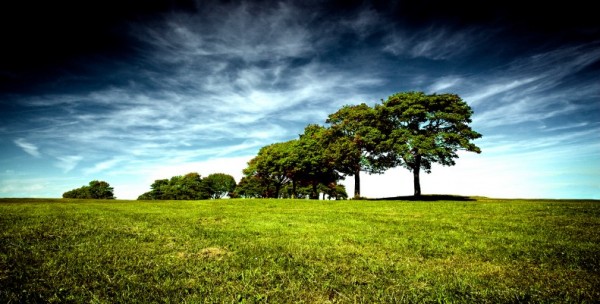Archive for December, 2012
Friday, December 28th, 2012
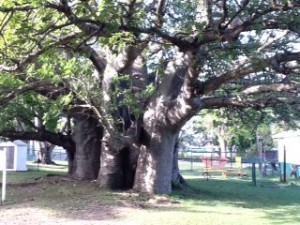 Yesterday I was fortunate enough to find time on my holiday to make my fourth visit to the amazing Baobab tree, one of three surviving specimens still alive on the island of Barbados. These trees native to Africa, Madagascar and Australia are amazing trees. They’re built like a fortress, strong, robust, solid and stout trees. It takes 15 people standing with outstretched hands to hug the width of the trees trunk.
Yesterday I was fortunate enough to find time on my holiday to make my fourth visit to the amazing Baobab tree, one of three surviving specimens still alive on the island of Barbados. These trees native to Africa, Madagascar and Australia are amazing trees. They’re built like a fortress, strong, robust, solid and stout trees. It takes 15 people standing with outstretched hands to hug the width of the trees trunk.
It’s rumoured that the seed survived crossing the Atlantic ocean possibly carried as a form of food by slaves during the time of the slave trade. I like to think of this tree as an ancestral tree.
Its botanical name is Adanisonia Digitata. It has no tree rings (which is why it is hard to tell the trees age) and some Baobab trees are reported to have lived for thousands of years. Its branches resemble tree roots, which is why it’s often described as the upside down tree.
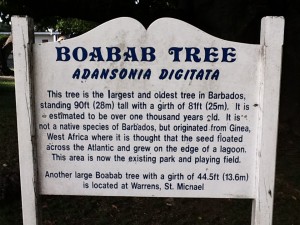
The tree has many useful purposes: It’s bark is used for cloth and rope. Leaves are made into condiments and medicine. It’s fruit can be eaten Its stout and fat trunk is attributed to the fact that it stores gallons of water in its trunk to survive the harsh drought conditions it lives in.
In Burkina-Faso when a Baobab tree dies it’s given a solemn funereal and drums normally reserved for the death of a chief are played. If you see a white cloth hanging from the tree then you know that the villagers use it as a place of worship or prayer.
It’s the national tree of Madagascar but native to 31 mainland African countries.
I unintentionally discovered that two Baobab trees exist on the island of Barbados where my parents are from in one of my many searches about the Baobab tree.
The images below are of the larger of the two Baobab trees on the island, which is situated in Queens Park in the centre of the islands capital city of Bridgetown. It’s reported to be over 1000 years old.
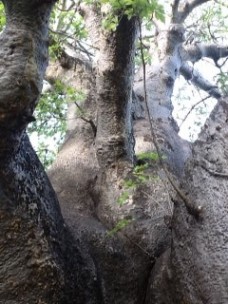 I make a ritual of visiting the tree and taking a new set of photographs of her every time I’m on the island. This includes a ritual of self-portraits with the tree.
I make a ritual of visiting the tree and taking a new set of photographs of her every time I’m on the island. This includes a ritual of self-portraits with the tree.
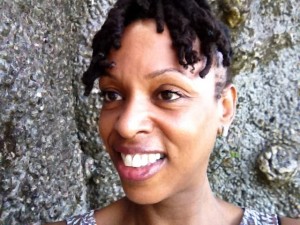
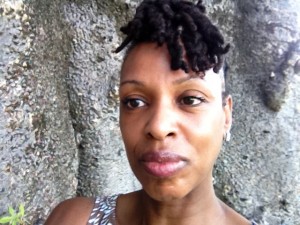 Enjoy my photo journey and self- portraits with the revered Barbados Baobab.
Enjoy my photo journey and self- portraits with the revered Barbados Baobab.
You’ll find out more about the mighty Baobab in my book Tree wRites due out 2013.
1 Comment
Thursday, December 27th, 2012
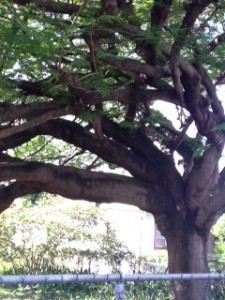 Yesterday on my way to my cousin’s Boxing Day breakfast I passed this tree and was compelled to stop and take its photo. It sat in the right hand corner of a garden in the home of people I did not know.
Yesterday on my way to my cousin’s Boxing Day breakfast I passed this tree and was compelled to stop and take its photo. It sat in the right hand corner of a garden in the home of people I did not know.
I stopped the car and grabbed my iPad. I am so thankful for the immediacy of technology, which can be such an invaluable resource to spontaneous creativity. I was immediately struck by the thickness of the trees stout, robust branches. Perhaps I want more of that solidness in my life and my work.
Taking in the tree through the camera lens I was captivated by the trees physical and energetic presence. It felt solid, sure of itself, yet humble and open.
Surveying its branches the following words came to me:
Strength, Resilience, Robust, Staying Power, Hardy, Solid, Hardworking, Reliable, Steadfast, Bold, Full Bloom. Mature, Endurance, Humble, Hardwearing, Steadfast, Huggable, Protective, Supporting
This is a practice you can do whenever you come across a tree you feel drawn to. Write down the words or images you associate or remind you of the tree.
I imagined what the trees roots would be like. In some of the books I’ve read about trees its reported that the labyrinth of a trees roots can sometimes be twice the size of it branches above ground. I visualized this trees root system surging through the soil beneath its feet for several feet.
There are a few ways you could use your words
1. Write down the words that remind you of the tree. What words do you associate with the tree? Brainstorm a list of your words.
2. Collect your words and write a poem about the tree.
3. Choose one or two words from your list and use as a focus for your day. Can you look at the word until it shines? This quote from an old post from Susannah Conway’s blog really helped me.
“I know nothing in the world that has as much power as a word. Sometimes I write one and I begin to look at it until it shines.” Emily Dickinson
Conway, S. (2006) Blog post
Today I have chosen the words “staying power” It begins with staying with writing this blog post and making sure that it’s gets posted before I head outside into the glorious sunshine.
4. Use your chosen words as writing prompts. The words “staying power” are stimulating ideas for a short essay about the staying power of my parents and their generation of Caribbean immigrants who planned to spend five years maximum in the UK in the early sixties before they returned to Barbados but who ended spending 40 years.
5. Use the image of the tree as a visual writing prompt. Free write for 10 minutes using the image of the tree as your starting point. Free writing is a writing technique where you write fast without stopping, writing down whatever comes into your mind. So you don’t need to write directly about the tree for the whole 10 minutes. Simply use the image of the tree as your starting point and then write freely about just anything.
6. Keep the image of the tree somewhere that is easily accessible to remind you of the words you want to use as focus words.
No Comments
Wednesday, December 26th, 2012
I hope you’ve had a wonderful Christmas day. I spent my day with eight members of my family and a family friend in Barbados where we’d all gathered to celebrate my Mum’s 80th birthday.
My Mum, Celestine is an amazing woman. She’s fit and well and still travels around on her own, and is fiercely independent. When the first of her tribe form the UK arrived last week unannounced we found her sitting in the middle of her living room with all the furniture piled into the middle of the room, which she had moved, all by herself. She was sipping a cup of tea, watching the day time TV drama, Days Of Our Lives (which half of the Barbadian population is addicted to). She’d engaged someone to paint the living room and was sitting back admiring the new coat of paint on the living room walls.
This year it was not the usual stuffing of food and drink on Christmas day for me. I’ve had a bout of mild food poisoning so I found myself eating and drinking very little. My day started off well. Got up at 4am to talk with my Mum, as she got ready for the annual Christmas day ritual on the island of attendance at church for a 5am service. All over the island Barbadians would descend upon the hundreds of churches in existence on the island for the traditional 5am Christmas service. With Mum’s departure I was left with three hours alone at home. Time alone is the best time for my creativity to manifest. I find myself falling into a space of deep refection and free-associating ideas in a process of cross fertilisation.
Creativity is a wonderful thing. I remember a quote I heard on a course years ago by the dancer Gilda Radner, ” I may get distracted by my need for love, but eventually I’ll get horny for my creativity. ” I feel that so much in my life in these later years. In my work as a coach and a writer creativity is what adds that spark, brings to life the richness of our encounters and experiences in everyday life. It’s what makes me feel alive, engaged and whole. Don’t get me wrong, love is important both love of others and the self but without creativity what use is love I ask myself. Many a time connecting with my creativity, doing something creative in an ordinary moment deepens my sense and feel of love. Can you imagine a life without creativity?
That’s why in the middle of Christmas day, which by the way here in Barbados rained for the better part of the day, when the sun came out I grabbed my iPad and walked down our street taking photo’s of the area with my sister. It lasted only for 10 minutes or less but we both had so much fun taking in the scenes and different objects, the contrasts of colours and textures, really seeing and looking at things around us. We got to about ten shots before the sun swiftly disappeared and the rain belted once down again drenching the area.
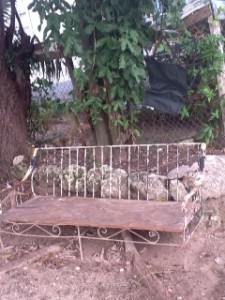

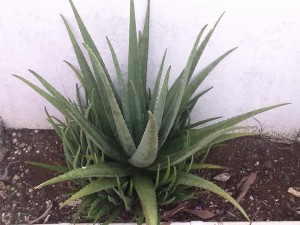


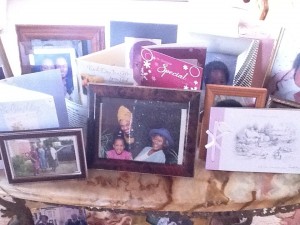
As part of the Christmas and New Year festivities we’re giving away three free gifts. Please grab your copy of the first of our Manifestos. This first one is all about Creativity. A list of gentle reminders about what you don’t and do need to get in touch with your creativity. Click here to download the Creativity Manifesto which you can download and print off.

We hope you enjoy. Watch out for the two remaining Manifesto’s on Writing and Connecting with Nature coming early in the New Year. We’ll post them both on the blogs and on the website as well as making them available on Twitter and LinkedIn.
Enjoy Boxing day and your gift from us here at www.jackeeholder.com
No Comments
Friday, December 21st, 2012
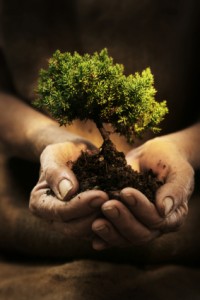 I’m in the Caribbean enjoying the benefits of so many books at my fingertips which means I can have unlimited access to on my Kindle. I no longer worry about the weight of my suitcase especially since Virgin Airlines have penalized us and placed restrictions for one suitcase only on Caribbean flights from London to the Caribbean. Not good news for a book, loving reader like me. One of the books I am enjoying on my Kindle is a new book I discovered by Jean Shinoda Bolen, Like A Tree.
I’m in the Caribbean enjoying the benefits of so many books at my fingertips which means I can have unlimited access to on my Kindle. I no longer worry about the weight of my suitcase especially since Virgin Airlines have penalized us and placed restrictions for one suitcase only on Caribbean flights from London to the Caribbean. Not good news for a book, loving reader like me. One of the books I am enjoying on my Kindle is a new book I discovered by Jean Shinoda Bolen, Like A Tree.
There’s always that dilemma about whether you should dip into reading a book on the same topic of a book you’re also writing about. Bolen’s book holds many similarities to the book I am writing about trees. It felt uncanny as I clicked through her pages noting many of the same references and books we both shared and at times doubting whether it was really worth me continuing with my own story at all.
This is a common challenge for writers. We lose heart when we find others writing around similar themes and topics. We imagine that our own stories must be a hundred percent original which of course is impossible. There is a saying that there are only seven stories any writer can write about and what we can do is write our own version of that story. That’s when I realized how important it is to distinguish the reasons why you should continue with writing your own version or story especially when you feel someone has just written the book you were meant to write.
My ten tips are based on my experience of reading Like A Tree are which is so close to the book I have been working on for several years Tree wRites:
1. My personal stories about trees are completely original and stand out as different from the personal stories Jean shares in her book.
2. It’s good news that a book been published on a topic that I’m also passionate about and dedicate to writing about
3. I’ve gained loads of new ideas for enhancing my own book, which included not trying to include too much, which I felt Jean was in danger of doing.
4. I’ve added new titles of books to read about trees to my collection, which always excites me.
5. I’ve gained new knowledge about trees and discovered new names of trees I’d never heard of before
6. I was able to distinguish how my book was different form Bolen’s book and gained greater clarity for communicating this in my book proposal.
7. I realized how important it was for me to share my tree stories and my love of trees even if the book does not end up being published by a mainstream publisher it will be a book I will be proud to publish myself.
8. It was further confirmation that there is a market for books like this and that my contribution is needed.
9. A timely reminder that no two books are ever the same.
10. Acknowledging how much I enjoyed reading Like A Tree and that some day other readers will feel the same from reading my version.
I don’t have the exact quote with me but I remember Barbara Kingsolver saying something like it took nearly 50 years for the story of the Poison Wood Bible to be ready to be written. I recognize that it has been over 15 years that this book about trees has been with me. It has been a process of incubation, maturing and finding its voice. Over the years more personal stories have come and found me. I’ve gained more knowledge about trees and synthesized much of what I am writing about. The book has taken me to it right form over time, which has felt right. I value the creative process in shaping this book and know deep inside me that not all books will be written fast and furious and that for many it will take years for the book to find it’s voice, it’s heart and it’s form.
There are many metaphors from the world of trees I can apply to my writing of this book. I have learnt patience. That it takes years for many trees to grow and it has been the same with this book, For some years it laid idle, only to go through a growth spurt and to be revived again. It has been sent out and rejected over twenty times but returned, shedding words and pages, even themes and stories and budding new leaves and blossoms as it entered a new spring. In many ways my book about trees is planting roots and when it is ready it words will branch out and write what needs to be written and I will intuitively know when the book is ready.
Just like a Tree is available from www.amazon.co.uk
No Comments
Friday, December 21st, 2012
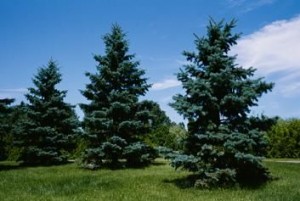 I’m reading a new book on my Kindle by Jean Shinoda Bolen, MD entitled Just Like A Tree: How Trees, Women and Tree People Can Save The Planet (2011) Conari Press. I love discovering new books about trees, as there is always some new information about trees that I didn’t know about before that I come across.
I’m reading a new book on my Kindle by Jean Shinoda Bolen, MD entitled Just Like A Tree: How Trees, Women and Tree People Can Save The Planet (2011) Conari Press. I love discovering new books about trees, as there is always some new information about trees that I didn’t know about before that I come across.
I wasn’t disappointed with this book, although it was a challenge to read in places, as there is much in the reference materials that I’ve already used in the book I’m currently writing about trees.
One piece of new information I came across was about Conifers and Evergreens trees, which the humble Christmas tree belongs to. I find it so easy to not even imagine the Christmas tree, which has been colonized for our homes even, grew in real forests and endured survival in harsh soils and conditions, but apparently this is very much the case. After reading about the physiology of this family of trees I don’t think I can ever look upon a real Christmas or Evergreen trees in the same way now that I know what it has come through.
Below are two short excerpts form Jean’s book minus the page reference (as I’m reading it on my Kindle). I hope it will enlighten you about the hardy Christmas tree and what tress from this lineage have endured to find it’s way into your home and living room this Christmas.
“ Those with the oldest lineage are members of the conifer family. The conifers do nothing showy- no autumn colours, spring blossoms, or glorious fruit – but when they are noticed and we understand how wonderful they are, a depth and poetic appreciation can result. Out of their wonder and love of the trees they study, naturalists have written about them with poetic sensibility. John Muir, America’s most famous and influential naturalist, for example, described a juniper as “a sturdy storm-enduring mountaineer of a tree, living on sunshine and snow, maintaining tough health on his diet for perhaps more than a thousand years” (Muir, My first Summer in the Sierra, 1911. P.146).
“ The Conifers are the trees I have most bonded with, and there is a geographic affinity between California and the North American boreal confer forests that draws me to their plight. How many Pine trees are cut down is a market supply and demand decision.
This is the one time of the year billions of people bring trees intentionally into their home. Find a way of really connecting with your tree. Use your fingertips to touch the pine needles, put your nose close. Is there still a trace of the scent of its natural fragrance?
Enjoy your Christmas tree this Christmas and as the new year arrive rather than leave it for the recycling collection try replanting this tardy tree in your garden or in an open space and see how it fares throughout the year.
No Comments
Friday, December 7th, 2012
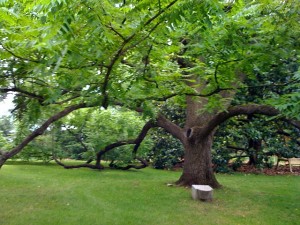 Photo credit David Burn
Photo credit David Burn
The Black Walnut Tree
My mother and I debate:
we could sell
the black walnut tree
to the lumberman,
and pay off the mortgage.
Likely some storm anyway
will churn down its dark boughs,
smashing the house. We Talk
slowly, two women trying
in a difficult time to be wise.
Roots in the cellar drains,
I say, and she replies
that the leaves are getting heavier
every year, and the fruit
harder to gather away.
But something brighter than money
moves in our blood-an edge
sharp and quick as a trowel
that wants us to dig and sow.
So we talk, but we don’t do
anything. That night I dream
of my fathers out of Bohemia
filling the blue fields
of fresh and generous Ohio
with leaves and vines and orchards.
What my mother and I both know
is that we’d crawl with shame
in the emptiness we’d made
in our own and our father’s backyard.
So the black walnut tree
swings through another year
of sun and leaping winds,
of leaves and bounding fruit,
and, month after month, the whip-crack of the mortgage.
- 1992 Mary Oliver
No Comments
Thursday, December 6th, 2012
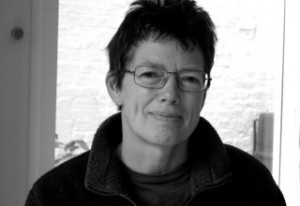 This afternoon whilst checking my Facebook messages which had not been checked for over six weeks I found out that one of my former coaching clients Reen Pilkington had sadly passed away last month from Parkinson’s disease. It was sad news for me for a number of reasons which made me think about sharing the news on my blog.
This afternoon whilst checking my Facebook messages which had not been checked for over six weeks I found out that one of my former coaching clients Reen Pilkington had sadly passed away last month from Parkinson’s disease. It was sad news for me for a number of reasons which made me think about sharing the news on my blog.
I don’t ever underestimate how special it is to work with individuals in my work as a coach. For me it is always an honour and a privilege when anyone places their trust and their faith in me to grant me permission to walk alongside them on this extraordinary journey of life.
Reen was an extraordinary individual, possessing a quiet strength, an amazing eye for photography especially nature, landscapes, portraits and her skills as a film maker along with the fantastic work she did at Roots and Shoots in the heart of Kennington.
We worked together for 18 months in early 2000 and then contracted for further sessions a year or so later. In that time I watched as Reen made a name and a brand for herself as a photographer and committed even more deeply to her art and her creativity.
Reen was a gentle soul whose eyes oozed kindness and compassion. She had a clear and clean spirit which always felt refreshing and energising. I always felt calm and peace in our conversations with each other.
One of the best gifts Reen gave me after our work had been completed was a series of photo shoots at her home. As a result one of the images from that shoot I’ve used for years as one of my main public profile shots. I loved the image Reen took of me because despite being in a difficult place at that time in my life she captured my happiness. Ironically in November of this year at around the possible same time of her passing I decided to no longer use this image and removed it from my Twitter profile page.

It goes without saying that in these moments we deeply feel the fragility of life and are reminded of how quickly we can depart from this life as we know it.
As I said on Sunday evening at a 50th birthday celebration where I hosted the speeches, let’s not forget to affirm each other now in the present, in our daily interactions, on the job, at home rather than wait for when the person is no longer here to say how great they were or how much we loved and cared about them.
I hold onto the memories that I experienced Reen in this unique way in our coaching work together during her life journey. I can only imagine the enormous body of exquisite photographs Reen has left as a legacy of her work and time with us. I hope these images offer comfort to family, friends and loved ones at this time.
I send my love and condolences to her son, her partner, her family and close friends.
In loving memory of Reen Pilkington.
No Comments
Thursday, December 6th, 2012
 Today I didn’t feel like going for my early morning walk. It had just gone 6am, the house was slowly warming up and outside looked dank and dark. I didn’t want to leave the cosiness of my home to face the frost and the cold of the early morning to walk for an hour.
Today I didn’t feel like going for my early morning walk. It had just gone 6am, the house was slowly warming up and outside looked dank and dark. I didn’t want to leave the cosiness of my home to face the frost and the cold of the early morning to walk for an hour.
Despite my feelings I did it anyway. Barely five minutes into my walk I found myself totally absorbed. I was loving the fresh, crisp air, enjoying taking the deep breathes and having fun exhaling streams of mist into the cold air.
During my walk my mind wandered to my morning’s dilemma of not wanting to walk and I realized how close a connection this feeling has to how many times I find myself not wanting to feeling in the mood to write.
There are many occasions when I find myself feeling this way and indeed many moments when I don’t always feel confident about my ability to write. I’ll have a crisis of confidence about what I want to say, compare my writing and doubt my credibility.
But always I find there is only one way to fix this seeping fear and that is to, simply and graciously take action. What works best for me are small actions which build momentum.
The truth of the matter is you don’t have to feel ready, confident or even prepared but the very act of taking action will always move you forward and further than if you did nothing at all.
You’ll find that some of the most successful writers are not necessarily the most talented. There are many talented writers sitting in homes just like yours. The difference is that the first act and the second group don’t. The first keep going and the second group give up at some point along the way.
Taking action does not require you to write perfectly. It’s not a guarantee that all that you write will be of value (the likelihood is that most of it won’t be of use). And sometimes you’re left feeling that what you write is crap. But keeping the pen moving over the page on a regular basis is what makes you a writer rather than someone who wants to write.
You don’t need to be the most confident person to succeed. In fact many successful people lack confidence in many areas but they have mastered the skill of taking action. Repetitive action leads to practice and practice turns into a habit and a habit practiced regularly over a considerable amount of time say 10,000 hours becomes mastery. I hope you get my point.
No Comments
Thursday, December 6th, 2012
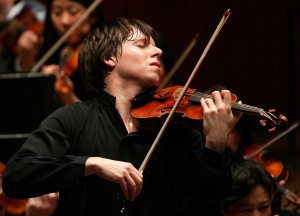 One of the many skills of a great coach is the ability to be observant. This means the ability to really listen and tune in beyond what is said to what is not said or to notice the variations in the way things are said.
One of the many skills of a great coach is the ability to be observant. This means the ability to really listen and tune in beyond what is said to what is not said or to notice the variations in the way things are said.
When we allow ourselves to remain curious and open in our observations we are more likely to see and feel more. One way of developing this skill is to become more observant and aware of people and your surroundings as you go about your daily activities and routines. This is a great training ground for coaches particularly those new to coaching.
To extend your capacity to observe start experimenting with noticing the people around you, how they walk, talk, engage with each other, dis-engage or the variations in the tones and pitch of voice?
Pay attention to your environment, what does the energy feel like in the different spaces you inhabit as you go through your day? What do you notice about the buildings you are working or living in?
When we observe we are awake, in tune to the senses and activating the ability to see beyond the visible.
This reminded me of the story of Joshua Bell.
One cold January morning in 2007 violinist Joshua Bell started to play the violin during the rush hour in a Washington metro station. Over the course of 45 minutes he played six Bach pieces, some were the most difficult pieces to write.
In the space of the first three minutes one middle aged man slowed down his pace and paused for a few seconds but was soon on his way. I wondered what he heard in that moment.
Following this one woman threw in the first dollar but with no eye contact and just kept walking.
Next one passer by physically stopped and leant against a wall for a few seconds but soon turned to his watch and scurried away on his way for work.
Virtuoso Violinist Joshua Bell got his greatest attention from a 3 year old boy despite his mother tugging him away. But to show his engagement in the beautiful music he was hearing the little boy kept turning his head and looking back at the spot where Bell stood playing. Apparently several other children did the same but were moved on quickly by their parents.
A total of six people stopped to listen to Bell play. A total of twenty people left money, but made little eye contact and kept moving at their same pace.
What made this incident even more poignant was the fact that Joshua Bell is one of the best musicians in the world and in that subway he played one of the most intricate pieces ever written on a violin rumoured to be worth 3.5 million.
How could so many people have missed this wondrous moment? Did only six people and a handful of children really hear something different in Bell’s music?
I found out during my research around the story that busking is not permitted on the Metro so a violinist’s presence was something out of the ordinary.
Was the rush to work so rigid and addictive that thousands literally did not pick up on, hear or observe that Bell’s playing was somehow different, exquisite or even dare I say it beautiful and deserved to be stopped and listened to?
And from one of the questions posed by a reader after the story went viral: “If they missed Bell how much more was being missed in their daily lives?”
Sometimes you may arrive at your coaching sessions with the same sense of busyness. You’re there in body but your thoughts feel scattered. In this place you do not have the observing eye, the capacity for presence, and the ability to really see and notice with that open and curious mind.
The more you’re present in your everyday interactions outside of the coaching room the more this is then transferred through your ability to really see and be in the coaching space.
I have found on more than one occasion that an observation of a small comment, facial expression or sound made by the client turns into a significant moment in our conversation.
A fun way to increase your ability to really see and observe is to draw. Try this experiment adapted from Frederick Franck’s book, The Zen of Seeing: Seeing/Drawing as meditation.
Find a space to sit a room or space outdoors will be fine. You will need a blank piece of paper, preferably unlined and a pencil.
“ Now, let your eyes fall on whatever happens to be in front of you. It maybe a table, a chair or a group of people talking. Close your eyes for the next five minutes…..
“ Now, open your eyes and focus on whatever you observed before. Look it in the eye, until you feel it looking back at you. Feel that you are alone with it, that this is the most important thing right now. You are no longer looking, you are SEEING…
“Now, take your pencil loosely in your hand, and while you keep your eyes focused allow the pencil to follow on the paper what the eyes perceives. Don’t check what gets onto the paper. Don’t let your eye wander from what it is seeing, and don’t lift your pencil from the paper.”
1. What’s different about the quality of your observation and seeing now?
And by the way, apparently Bruce Springsteen did a similar experiment twenty years prior and no one paid much attention to him either.
Photo by Chris Lee
No Comments
Wednesday, December 5th, 2012
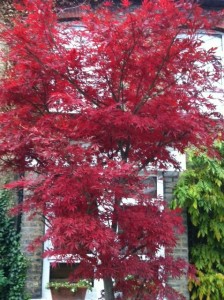
I wrote this blog post three weeks ago and it dawned on me that the red trees have all but disappeared from our landscape. Winter is truly here. So delight in what was.
Three weeks ago on my morning walk to Sainsbury’s to do some shopping I set myself a creative challenge of taking photos of every red tree or leaf I passed on my walk.
Autumn is a wonderful time of the year to observe the shift of colours of the trees from the normal greens to the shimmering tones of red, bronze, copper and maroon’s that burst onto the branches of many trees and take centre stage. Meditate on the colours.
Grab a camera or your phone camera and embark on a colour of the trees walk and get inspired.
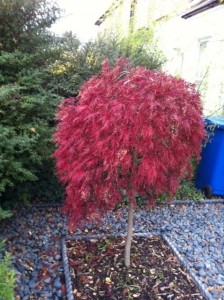
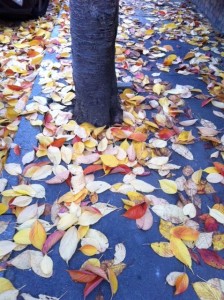
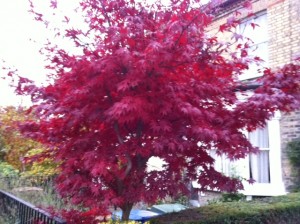
No Comments
 Yesterday I was fortunate enough to find time on my holiday to make my fourth visit to the amazing Baobab tree, one of three surviving specimens still alive on the island of Barbados. These trees native to Africa, Madagascar and Australia are amazing trees. They’re built like a fortress, strong, robust, solid and stout trees. It takes 15 people standing with outstretched hands to hug the width of the trees trunk.
Yesterday I was fortunate enough to find time on my holiday to make my fourth visit to the amazing Baobab tree, one of three surviving specimens still alive on the island of Barbados. These trees native to Africa, Madagascar and Australia are amazing trees. They’re built like a fortress, strong, robust, solid and stout trees. It takes 15 people standing with outstretched hands to hug the width of the trees trunk. I make a ritual of visiting the tree and taking a new set of photographs of her every time I’m on the island. This includes a ritual of self-portraits with the tree.
I make a ritual of visiting the tree and taking a new set of photographs of her every time I’m on the island. This includes a ritual of self-portraits with the tree. Enjoy my photo journey and self- portraits with the revered Barbados Baobab.
Enjoy my photo journey and self- portraits with the revered Barbados Baobab.
